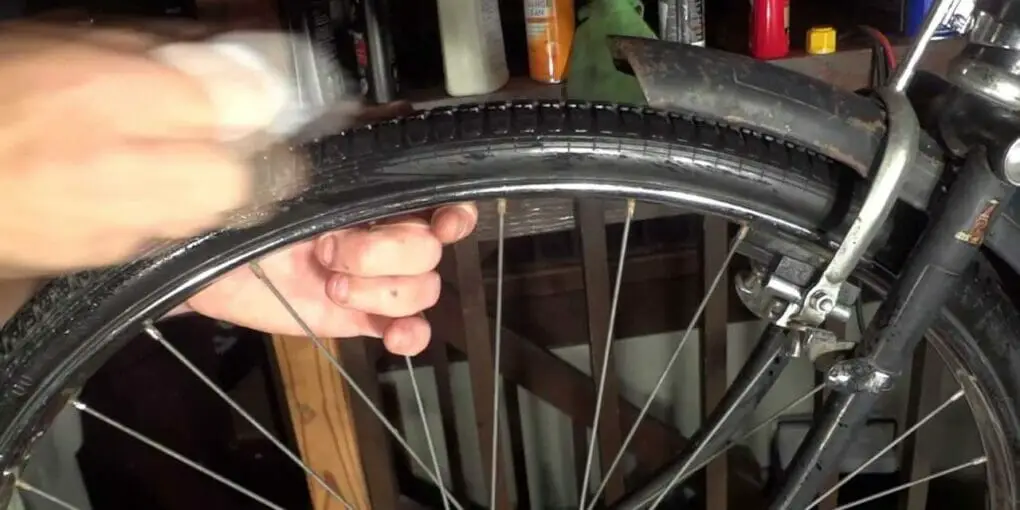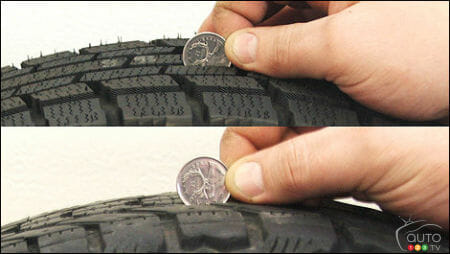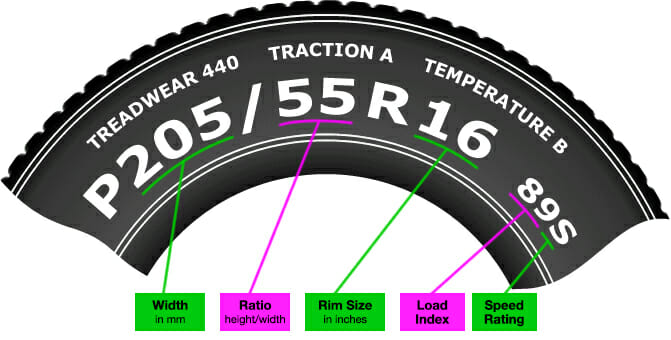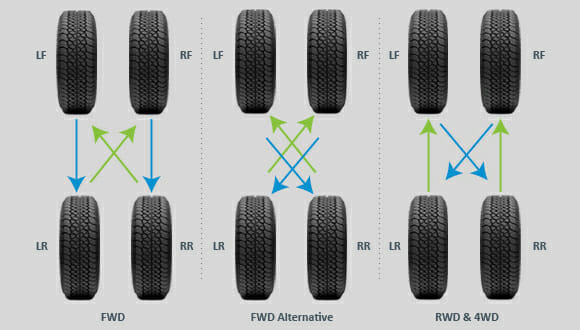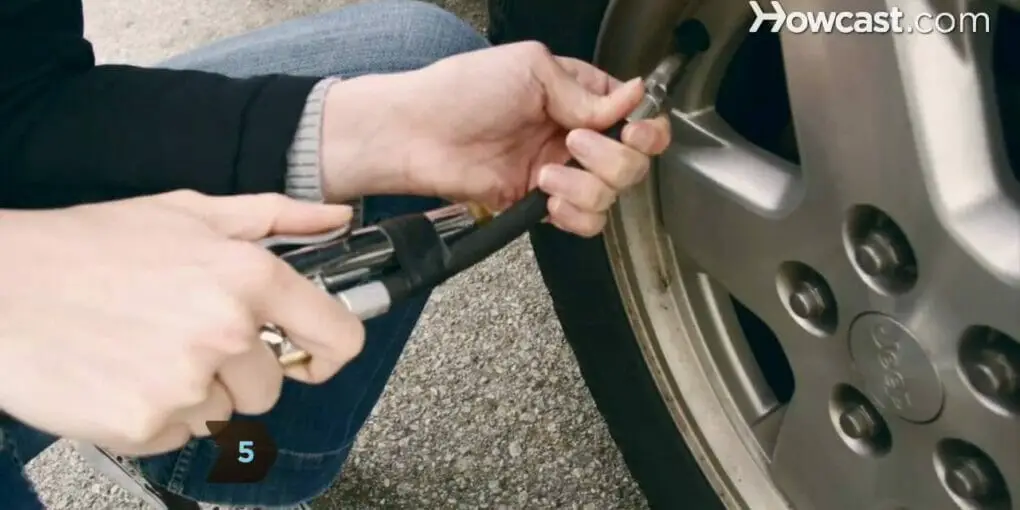- Home
- Blog
How to Wash Wheels And Tires
If your wheels and tires are looking a little dirty, it’s time to give them a good cleaning. But before you start scrubbing away, there are a few things you need to know in order to get the job done right. Here’s a step-by-step guide on how to wash wheels and tires so they’ll look like new again.
- Park your car on a level surface and engage the parking brake
- Place a bucket under the front tire on the driver’s side of the vehicle
- Spray the wheel and tire with water from a garden hose to remove any loose dirt or grime
- Apply a liberal amount of automotive soap or tire cleaner to the wet wheel and scrub it with a brush until it is clean
- Repeat this step for each of the wheels and tires on your car
- Rinse off all of the soap or cleaner with water from the hose
- 6 Dry off each wheel and tire with a clean towel to prevent water spots from forming
How to Clean Tires With Household Products
If your tires are looking a little lackluster, you can clean them up with some common household products. Here’s how:Start by mixing up a solution of 1 part dish soap to 4 parts water.
Spray or sponge this mixture onto your tires, and then scrub with a brush to loosen any dirt or grime.Rinse the tires thoroughly with water, and then dry them off with a cloth.Next, mix together 1 part vinegar and 1 part baking soda.
Apply this mixture to the tires using a sponge, and scrub in small circles. Rinse the tires again with water.For a final touch, you can apply tire shine using a rag or applicator pad.
This will help to protect your tires from future dirt and grime build-up.
What is the Best Way to Clean Tire Rims?
There are a few different ways that you can clean your tire rims, but some methods are better than others. The best way to clean tire rims is to first remove any dirt or debris from the surface with a brush or cloth. Once the surface is clean, you can then apply a cleaner specifically designed for cleaning tires and rims.
These cleaners will usually come in either a spray form or a gel form, and they will help to break down any built-up grime on your rims. Apply the cleaner according to the instructions on the packaging, and then rinse it off with water. You may need to use a brush or sponge to scrub away any tough areas of grime.
Finally, dry your rims with a soft cloth to prevent rusting.
What Do Professional Detailers Use to Clean Wheels?
One of the most important steps in routine vehicle maintenance is cleaning the wheels. This is because wheels are constantly exposed to brake dust, grime, and other debris which can lead to corrosion and other damage. Professional detailers typically use a two-step process to clean wheels.
The first step involves using a wheel cleaner specifically designed to break down tough grime and build-up. These cleaners often come in aerosol form and are sprayed onto the wheel surface. After letting the cleaner sit for a few minutes, it is then agitated with a brush before being rinsed off.
The second step of wheel cleaning involves polishing the wheels with a metal polish. This will help to restore shine and protect against further corrosion.
Can You Use Car Wash Soap on Wheels?
If you’re trying to get your wheels clean, you may be wondering if car wash soap is the way to go. The answer is yes and no. Car wash soap is designed to remove dirt and grime from your car’s paint, but it can also be used on wheels.
However, there are a few things you need to keep in mind when using car wash soap on wheels.First, make sure that the car wash soap you’re using is safe for use on clearcoat or painted finishes. Some soaps can strip away the finish on your wheels, leaving them dull and unprotected.
Second, avoid using car wash soap on hot wheels – let them cool down first to avoid any potential damage. Finally, be sure to rinse your wheels thoroughly after washing them with car wash soap to remove any residual soap film.If you follow these simple tips, you can safely use car wash soap on your wheels to get them clean and shining like new!
Conclusion
If your wheels and tires are looking a little dirty, it’s easy to clean them at home with just a few simple steps. First, you’ll need to gather some supplies including soap, water, a sponge or brush, and some tire cleaner. You can find all of these items at your local auto parts store.
Next, mix together soap and water in a bucket and use the sponge or brush to scrub the dirt and grime off of your wheels. Be sure to rinse them well afterwards. Then, apply the tire cleaner according to the instructions on the bottle.
Usually you will just spray it on and let it sit for a few minutes before wiping it off with a cloth.After cleaning both your wheels and tires, they should look like new again!
How to Clean Mountain Bike Tires
One of the most important aspects of mountain biking is keeping your tires clean. Not only does this help improve your traction, but it also helps to prolong the life of your tires. Here are a few tips on how to clean mountain bike tires:
1. Use a dedicated bike brush or rag to remove any mud or debris that may be clinging to your tires.2. If you see any big chunks of mud, use a pick or other sharp object to remove them.3. Once you’ve removed all the visible dirt and grime, rinse your tires with water.
4. For a deeper clean, mix up a solution of soap and water and scrub your tires with it using a brush or rag. Rinse thoroughly afterwards.5. Allow your tires to air dry completely before riding again.
- If your mountain bike tires are looking a little worse for wear, it’s probably time to give them a good clean
- Here’s how to do it:1
- Remove the wheels from your bike and place them on a work surface
- Use a brush or cloth to remove any mud or debris from the treads of the tires
- Pay particular attention to the sidewalls, as they can be susceptible to damage from rocks and other debris
- Once the majority of the dirt has been removed, use a hose or bucket of water to rinse off the tires completely
- Allow the tires to dry completely before re-installing them on your bike
How I Clean A Super Dirty Bike Indoors. Small Room And Some Tricks…
Is It Ok to Hose down Your Mountain Bike?
Yes, it is perfectly fine to hose down your mountain bike. In fact, it is often necessary in order to keep your bike clean and in good working condition. Hosing down your bike will remove any dirt, grime or debris that has built up on the frame and components.
It is important to make sure that you use a mild soap when hosing down your bike, as harsh chemicals can damage the finish or paint job.
What Should I Use to Clean My Mountain Bike?
If you’re like most mountain bikers, you probably don’t clean your bike as often as you should. But when it comes time to give it a good cleaning, what should you use?There are a few different schools of thought on this subject.
Some people swear by using dish soap, while others prefer to use something specifically designed for bikes. There are also those who say that any kind of soap is bad for your bike because it can remove the factory-applied lubricants.So, what’s the best way to clean your mountain bike?
The answer may surprise you…The best way to clean your mountain bike is actually with plain old water. That’s right, water.
Just get a hose and spray down your bike after a ride. This will remove most of the dirt and grime without damaging any of the components or removing any lubrication.If you want to go one step further, you can add a little bit of mild soap to the mix (dish soap is fine).
This will help loosen up any stubborn dirt and grime. Just make sure to rinse everything thoroughly afterwards so that no soap residue is left behind.Once you’ve hosed down your bike and removed all the visible dirt, it’s time to move on to the drivetrain.
This is where things can get a little more tricky, because you don’t want to damage anything by using the wrong cleaner or applicator.
Can You Use Dish Soap to Clean Mtb?
Mountain biking is a great way to get outdoors and enjoy some exercise, but it can be hard on your bike. Over time, your bike will start to accumulate dirt, grime and mud, which can make it difficult to ride and harder to clean. Dish soap can be an effective cleaning agent for your mountain bike, provided you use it correctly.
Dish soap is designed to break down grease and oils, both of which are common on a mountain bike. When used in conjunction with water, dish soap can help loosen and remove dirt, grime and mud from your bike frame, components and drivetrain. Just be sure to rinse your bike thoroughly afterwards to avoid any soapy residue build-up.
To clean your mountain bike with dish soap, start by rinsing off any loose dirt and debris with water. Then, mix up a solution of dish soap and water in a bucket or container. Apply the soapy mixture to your mountain bike using a sponge or brush, taking care to scrub away any stubborn dirt or grime.
Rinse the bike thoroughly with clean water when you’re finished washing it down.If you find that dish soap isn’t quite doing the trick for cleaning your mountain bike, there are other household cleaners that can be used as well. White vinegar mixed with water makes an effective degreaser for cutting through tough grime on yourbike frame or components.
How Do You Clean White Bike Tires?
Assuming you would like tips on how to clean white bike tires specifically, here are a few tips:-Use a dedicated bike cleaner or soap and water. Avoid using harsh chemicals or cleaners as they may damage the tire.
-Scrub the tires with a brush or cloth until they are clean. A toothbrush can be used for hard to reach places.
-Rinse the tires with water and dry them off with a towel or cloth.
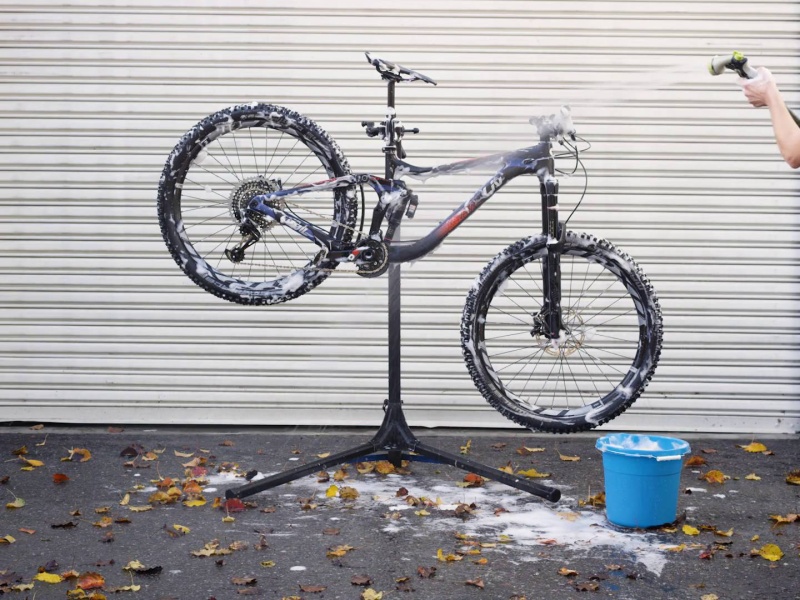
Credit: www.liv-cycling.com
How to Make Bike Tires Look New
If you’re like most bike riders, you probably don’t give your tires much thought – until they start looking old and worn. Then, all of a sudden, you notice every tiny nick and scratch in the rubber. If your tires are starting to look past their prime, there’s no need to replace them just yet.
With a little elbow grease, you can make them look new again.Here’s how:1. Start by giving your tires a good cleaning.
Use a brush or sponge to scrub away any dirt and grime. Rinse with water and let the tires dry completely before proceeding to the next step.2. Once your tires are clean, it’s time to fix any nicks or scratches in the rubber.
For small imperfections, use a pencil eraser or piece of sandpaper to buff them out.For larger problems, fill in the damaged area with tire repair kit latex (available at most auto parts stores). Let the latex dry completely before moving on.3. Now that your tires are clean and free of damage, it’s time to add some shine!
Apply a thin layer of tire polish all over each tire using a rag or applicator pad.
Conclusion
If you live in an area with lots of dirt and mud, then you know how difficult it can be to keep your mountain bike tires clean. Here are a few tips on how to clean mountain bike tires so that you can enjoy riding in all kinds of terrain.First, make sure that you have the right tools for the job.
You will need a stiff brush and some kind of degreaser or soap. You will also need a hose or pressure washer to rinse off the cleaner.Start by removing any loose debris from the tire with your brush.
Next, apply the degreaser or soap to the tire and scrub it with the brush. Be sure to get into all of the nooks and crannies where dirt likes to hide. Rinse off the cleaner with your hose or pressure washer and admire your sparkling clean tires!
How to Choose Off-Road Tires
When it comes to off-road tires, there are a few things you need to take into consideration. The first is the size of the tire. You will want to make sure that the tire is big enough to handle the terrain you will be driving on.
The second thing you need to consider is the tread pattern. This will help you get traction on different types of surfaces. Lastly, you need to think about your budget.
Off-road tires can be expensive, so you want to make sure you are getting the best value for your money.
- Research the types of off-road tires available
- Decide which type of tire is best suited for the terrain you will be driving on
- Consider your budget when choosing off-road tires
- Some tires can be quite expensive
- Choose a brand of tire that you trust and that has a good reputation
- Buy the correct size tires for your vehicle
- Make sure to check the load capacity and speed rating of the tires before purchasing them
- Have the new off-road tires installed by a professional mechanic or do it yourself if you are confident in your abilities
Off-Road Tires for Trucks
Off-road tires are designed to provide traction and stability on a variety of surfaces, including mud, sand, snow, and rocks. They typically have deeper treads than regular passenger tires, as well as tougher sidewalls that can withstand more punishment. When shopping for off-road tires, it’s important to consider the type of terrain you’ll be driving on most often.
For example, if you’re mostly going to be driving on dirt roads or in muddy conditions, you’ll want a tire with deep treads that can grip the ground well. On the other hand, if you’re mostly going to be driving on dry rocks or hardpacked trails, you’ll want a tire with shallower treads that won’t get clogged up with debris. There are many different types of off-road tires available on the market today, so it’s important to do your research and find the right one for your needs.
What Should I Look for in Off-Road Tires?
If you’re looking for off-road tires, there are a few things you should keep in mind. First, consider the terrain you’ll be driving on. If you’re mostly driving on trails or fire roads, you’ll want a tire with good tread that can handle light mud and sand.
For more extreme off-roading, like rock crawling or mud bogging, you’ll need a tire with deeper tread and a tougher sidewall.Second, think about the size of your vehicle and what kind of clearance you have. If you have a big SUV or truck, you can get away with bigger tires without sacrificing much ground clearance.
However, if you have a smaller vehicle or are worried about ground clearance, go with smaller tires.Third, pick a tire that’s designed for your type of driving. Some all-terrain tires are better suited for highway driving than others, so make sure to read the reviews before making your purchase.
And finally, don’t forget to factor in price when making your decision – off-road tires can be quite expensive!
How Many Ply Tires Do I Need for Off-Road?
There is no definitive answer to this question as it depends on a number of factors, including the type of off-roading you will be doing, the terrain you will be driving on and your personal preferences.If you are planning on doing any serious off-roading, then you will need tires with at least 3 ply rating. This will give you enough strength and durability to handle rough terrain without puncturing or damaging your tires.
However, if you only plan on doing light off-roading, or if you don’t anticipate driving on particularly rough terrain, then 2 ply tires may suffice. Ultimately, it is up to you to decide how many ply tires you need for off-road use based on your specific needs and wants.
How Do I Choose Mud Tires?
Mud tires are a type of tire designed for use in off-road conditions, specifically for driving on soft surfaces like mud or sand. They typically have a deeper tread than regular passenger or light truck tires, and they may also have special features like reinforced sidewalls or aggressive tread patterns.When choosing mud tires, it’s important to consider the specific needs of your vehicle and driving habits.
For example, if you often drive in areas with deep mud or sand, you’ll need tires with deeper treads to provide adequate traction. If you only occasionally venture off-road, lighter-duty mud tires may be sufficient.It’s also important to think about the size of your vehicle when selecting mud tires.
Tires that are too small may not provide enough ground clearance, while those that are too large can be difficult to control. It’s generally best to choose tires that are the same size as the ones that came standard on your vehicle.Finally, keep in mind that mud tires can significantly affect fuel economy due to their increased weight and rolling resistance.
If fuel economy is a major concern for you, consider choosing lighter-weight Mud Terrain Tires (MTT) instead of traditional heavy-duty off-road tires.
Is More Sidewall Better Off-Road?
It’s a common misconception that more sidewall equals better off-road performance. In reality, there are tradeoffs that need to be considered when choosing the right tire for your off-road vehicle.More sidewall can give you a smoother ride and may help protect your rims from rocks and other debris.
However, it also can make your tires more susceptible to punctures and can decrease overall traction.If you’re planning on doing any serious off-roading, it’s important to choose tires that will provide the right balance of traction, durability, and comfort for your needs.
Conclusion
Off-road tires are a crucial part of any off-roading vehicle. They provide the grip and traction needed to navigate rough terrain, and they can make the difference between a fun day out on the trails or a frustrating experience. But with so many different types and brands of off-road tires on the market, how do you choose the right ones for your vehicle?
Here are a few things to consider when choosing off-road tires.First, think about the type of off-roading you’ll be doing. If you’re mostly driving on dirt roads or mild trails, all-terrain tires might be a good option.
These tires offer good traction and durability without being overly aggressive, making them a good choice for daily drivers that occasionally hit the dirt. For more extreme off-roading, mud terrain tires are designed to provide maximum traction in mud, sand, and other slippery conditions. These tires feature large tread blocks with deep voids that expel mud and debris, but they can be loud on paved roads and wear down quickly if used as daily drivers.
Next, consider tire size. Most off-road vehicles come equipped with larger than average wheels and tires, so it’s important to make sure your new off-road tires will fit your wheels. It’s also important to ensure that your new tires don’t interfere with suspension components or bodywork; many lifted trucks and SUVs require special offset wheels to prevent tire rub.
Once you’ve decided on tire size, check out our Off Road Tire Buying Guide for more information on choosing the right width, aspect ratio, and load range for your needs.Finally, don’t forget about price. Off-road tires can be expensive, especially if you’re looking at high quality options from name brand manufacturers such as Nitto or Toyo .
How to Cut Old Tires in Half
Old tires can be recycled and used in a variety of ways, but sometimes they just need to be cut in half. This can be done with a few different tools, but the process is generally pretty simple.
- First, you need to find an old tire that you don’t mind cutting in half
- If the tire is still in good condition, you can sell it or recycle it instead of cutting it
- Once you have your old tire, use a sharp knife or saw to cut through the center of the tire from top to bottom
- Be very careful when cutting through the tire, as the edges can be quite sharp
- Once you’ve cut through the tire, you should now have two halves of an old tire
- You can dispose of them however you see fit!
How to Cut a Tire in Half for a Flower Bed
If you’re looking for a unique way to edge your flower bed, why not try cutting a tire in half? It’s easy to do and it gives your garden a nice, clean look. Here’s how to do it:
1. Start by finding an old tire that you don’t mind sacrificing. If you don’t have one lying around, you can usually find them at garage sales or thrift stores.2. Once you have your tire, use a sharp knife or saw to cut it in half lengthwise.
Be careful not to cut yourself!3. Now that your tire is halved, simply place it around the perimeter of your flower bed. You can secure it in place with some heavy-duty gardening staples or nails.
And that’s all there is to it! Cutting a tire in half is a quick and easy way to add some unique flair to your garden. Give it a try today!
What is the Best Way to Cut Old Tires?
Assuming you mean how to repurpose old tires, the best way to cut them would be with a power saw. You’ll want to use a blade designed for cutting rubber, which will make the process easier and produce less dust. Make sure to wear gloves and a mask while cutting, as tire particles can be harmful if inhaled.
Once you’ve cut the tire into pieces, you can use it for all sorts of things around the home or garden. For example, you can create Tire Planters by drilling drainage holes in the bottom and filling them with soil. Or, use sections of tire as border edging in your garden beds.
Just get creative – there are tons of possibilities!
Can You Cut off an Old Tire?
Yes, you can cut off an old tire. However, it is important to note that doing so may void your warranty and/or cause other damage. Always consult your owner’s manual or a professional before performing any maintenance on your vehicle.
How Do You Cut Old Tires for Planters?
If you’re looking for a way to upcycle old tires and give your garden a unique flair, consider repurposing them into tire planters! Tire planters are easy to make and can add a fun pop of color to your outdoor space. Plus, they’re an eco-friendly option for those who want to recycle old tires instead of sending them to the landfill.
Here’s how to cut old tires for planters:1. Using a sharp knife or power tool, carefully cut off the top and bottom of the tire so that it is open at both ends. If using a power tool, be sure to wear safety goggles and gloves.
2. Once the top and bottom are cut off, use your knife or power tool to make evenly-spaced slits around the circumference of the tire. These slits will serve as drainage holes for your plant’s roots.3. Now it’s time to fill your tire planter with soil!
Add some rocks or gravel to the bottom of the tire for drainage purposes, then fill it up with potting mix or compost. Be sure not to pack the soil too tightly – leave some room for roots to breathe.4. Finally, choose your plants!
Annuals and succulents work well in tire planters since they don’t require a lot of root space. Place your plants in the slits you created earlier, then water them well and enjoy your new garden feature!
Can You Cut a Tire With a Grinder?
It is possible to cut a tire with a grinder, but it is not recommended. Grinders are designed to be used on hard materials, and tires are made of soft rubber. This can cause the grinder to slip and damage the tire.
Conclusion
Tire companies are always looking for ways to recycle old tires and one way to do that is by cutting them in half. This blog post shows how to cut old tires in half using a sawzall or similar tool. It’s a pretty simple process and only takes a few minutes.
You’ll need to be careful not to damage the rim of the tire though.
How to Tell If Winter Tires are Still Good
When it starts to get colder outside and the snow begins to fall, you may start to wonder if your winter tires are still good. After all, they’ve been sitting in your garage for months, maybe even a year. Here are some things to look for to see if your winter tires are still good.
First, take a close look at the tread on your tires. If the tread is worn down, it’s time for new tires. You can also do the penny test – place a penny upside down in the tire tread.
If you can see all of Lincoln’s head, the tread is too shallow and it’s time for new tires.Another thing to look for is cracks or splits in the sidewall of the tire. These need to be replaced as well because they can cause air leaks.
If your winter tires seem to be in good condition, go ahead and put them on your car before the first big snowfall. They’ll help keep you safe on slippery roads!
- Check the tread depth of your winter tires
- The tread depth should be at least 6/32 of an inch
- Look for any cracks, cuts, or bald spots on the tire
- Inspect the sidewalls of the tires for any signs of cracking or splitting
- Check the date code on the tires to see when they were manufactured
- Winter tires typically have a lifespan of 4-6 years
- Have a professional inspect your winter tires if you are unsure about their condition
Globe Drive: How to check the life of your winter tires
Safe Tire Tread Depth Mm
Tire tread depth is important for a number of reasons. First, it affects your car’s ability to grip the road. Second, it impacts how well your car handles in different weather conditions.
Third, tire tread depth can affect your car’s fuel economy.The minimum safe tire tread depth is 4/32 of an inch, or 3.2 mm. This is the depth at which your tires will start to lose their grip on the road and may slip on wet or icy surfaces.
Your car’s handling will also be affected at this depth. The deeper your treads are, the better grip and handling you’ll have in all conditions.To ensure safety and optimal performance, regularly check your tires’ tread depths and replace them when they reach 4/32 of an inch.
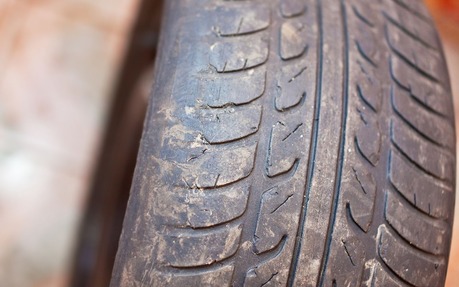
Credit: www.guideautoweb.com
How Do You Know If Winter Tires are Still Good?
If you’re unsure about whether or not your winter tires are still good, there are a few things you can check. First, take a look at the tread depth. If the tread is worn down to 4/32 of an inch or less, it’s time to replace the tire.
You can also do the “penny test” to check the tread depth: simply insert a penny into the tread grooves with Lincoln’s head facing downward. If you can see all of Lincoln’s head, the tread is too shallow and it’s time for new tires.Another way to tell if winter tires are still good is to inspect them for cracks or other damage.
Any exposed cord or steel belting means that the tire is no longer safe to use. Finally, pay attention to how your car feels when driving on winter roads. If you notice increased vibration or instability, that’s another sign that it’s time for new tires.
If you’re in doubt about whether your winter tires are still good, it’s always best to err on the side of caution and get new ones. After all, nothing is more important than safety on the road!
How Long Do Winter Snow Tires Last?
Assuming you are talking about winter tires and not all-season tires:Most people generally get about 3-4 seasons out of a set of winter tires. After that, the tread starts to get too worn down to provide adequate traction on snowy and icy roads.
Of course, how long your tires last also depends on how often you use them and in what conditions. If you live in an area with very mild winters, you may be able to get 5 years or more out of a set of winter tires. But if you drive frequently in deep snow or on icy roads, they may only last 2-3 years.
There are a few things you can do to help extend the life of your winter tires. First, invest in a good set of tire chains. This will help reduce wear and tear on the treads.
Second, make sure you clean your tires after each use. This will remove any salt or other chemicals that can eat away at the rubber. Finally, store your tires properly during the off-season.
If possible, keep them indoors in a cool, dry place.
How Do You Check If Tires are Still Good Canada?
It is important to regularly check your tires to ensure they are still in good condition and have sufficient tread depth. There are a few different ways you can check the condition of your tires.One way to check if your tires are still good is to look at the tread depth.
The minimum tread depth in Canada is 4 mm, but it is recommended that you have at least 6-8 mm of tread remaining on your tires. You can measure tread depth using a tire gauge or a ruler.Another way to tell if your tires are still good is by looking for signs of wear and tear such as cracks, bulges, or bald spots.
If you see any of these signs, it’s time to replace your tire.Finally, you should also check the air pressure in your tires using a tire pressure gauge. The correct air pressure for your tires can be found in the owner’s manual for your vehicle.
Underinflated tires can lead to decreased fuel efficiency and increased wear and tear.
How Do You Check If Your Tires are Still Good?
It’s important to regularly check your tires to ensure they are still in good condition and have plenty of tread left. There are a few different ways you can check the condition of your tires.One way is to visually inspect them.
Look for any signs of wear and tear, such as cracks, balding, or excessive sidewall bulging. These could all be indicative of a tire that needs to be replaced.Another way to check the condition of your tires is with a tread depth gauge.
This tool can help you determine how much tread is left on your tires. Ideally, you want at least 4/32” of tread remaining. If your tread depth is less than that, it’s time to replace your tires.
Finally, you can also have a professional inspect your tires for you. They will be able to tell you if they need to be replaced or not based on their condition.
Conclusion
If your winter tires are more than six years old, it’s time to replace them. Look for cracks, cuts or bald spots on the tread. If you see any of these signs, it’s time for new tires.
How to Get Off-Road Tires in Fortnite
One of the most popular features in Fortnite is the ability to drive around in vehicles. However, one of the biggest complaints about driving in Fortnite is that it’s difficult to see where you’re going due to the lack of off-road tires. In this blog post, we’ll show you how to get off-road tires in Fortnite so you can have an easier time driving around the map.
- Go to the Fortnite Battle Royale homepage and sign in
- Click on the “Store” tab at the top of the page
- Scroll down to the “Featured” section and find the “Off-Road Tires” item
- Click on the “Buy Now” button for that item
- Confirm your purchase by clicking on the “Purchase” button in the pop-up window
Where to Find Off-Road Tires in Fortnite Chapter 3
In Fortnite Chapter 3, you can find Off-Road Tires at various locations around the map. Here are a few of the most popular places to look for them:1. The junkyard – This is a great place to find Off-Road Tires, as there are usually plenty of them lying around.
Just be careful of the enemies that spawn here!2. The gas station – Another good spot to check for Off-Road Tires is at the gas station. You’ll often find them near the pumps or in the garage area.
3. The race track – If you head to the race track, you’ll have a chance to find Off-Road Tires on the course itself or in the pit area. Be sure to grab them before your opponents do!
How Do You Get Off-Road Tires in Fortnite?
Off-road tires are a new item in Fortnite that can be found in treasure chests, supply drops, and llamas. They can be used to make your vehicle go faster and off-road. Here’s how to get them:
1. Look for them in treasure chests, supply drops, and llamas – Off-road tires can be found in all of these places. Keep your eyes peeled and you’re sure to find some eventually.2. Use them to make your vehicle go faster and off-road – Once you have the tires, simply attach them to your vehicle (hoverboard or shopping cart) and they’ll automatically start working.
Your vehicle will now be able to move much faster and even go off-road without any problems!3. Enjoy your newfound speed! – That’s all there is to it!
Now you can zip around the map at breakneck speeds or take your vehicles off the beaten path and explore areas that were previously inaccessible. Have fun!
How Do You Get Off-Road Tires in Fortnite Chapter 3?
Off-road tires are a new item in Fortnite Chapter 3 that can be found around the map. They can be used to travel faster on rough terrain, and can also be used as a weapon. To find off-road tires, look for them in piles of junk or in loot chests.
When you have one, equip it by pressing the use button while standing next to it.
What are the Off-Road Tires Called in Fortnite?
There are multiple types of off-road tires in Fortnite, each with their own name and purpose. The first type is the All Terrain Tire, which is designed for use on all surfaces, including dirt, grass, and pavement. The second type is the Mud Tire, which is specifically designed for use on muddy or wet surfaces.
The third type is the Snow Tire, which is designed for use on snow-covered surfaces.
Conclusion
In Fortnite, there are a few ways to get off-road tires. The first way is to find them in the world. You can find them in certain locations, such as near roads or in areas with a lot of trees.
The second way is to buy them from the Item Shop. They cost 500 V-Bucks each and can be found under the ‘Vehicles’ section. The third way is to get them as a reward from completing certain challenges.
For example, you can get off-road tires by completing the ‘Drive through different flaming hoops’ challenge.
How to Know What Tires to Get
There are a few things to consider when purchasing tires for your vehicle. First, you will need to know the size of the tire. Second, you will need to decide on the type of tire.
Third, you will need to decide on the brand of tire. And finally, you will need to decide on the price range that you are willing to spend.
- To know what tires to get, follow these steps:1
- Decide the type of vehicle you will be using
- Consider the climate and terrain where you’ll be driving
- Choose between all-season and winter tires
- Select the right size tire for your vehicle
- Research different brands and compare prices
How to know when it's time for new tires
How Do I Know What Tire to Get for My Car?
There are a few things you need to consider when purchasing tires for your car. First, you will need to know the size of the tires that fit your car. You can find this information in your car’s owner’s manual or by checking the placard on the doorjamb.
Once you know the size, you can narrow down your search by selecting the type of tire that best suits your needs.The three main types of tires are all-season, winter and summer. All-season tires are designed to provide good traction and handling in a variety of weather conditions, including light snow.
Winter tires are made for cold temperatures and snowy or icy conditions. They have deeper treads than all-season tires to provide better grip on slippery surfaces. Summer tires are designed for warm weather driving and offer good grip on dry roads.
In addition to selecting the right type of tire, you will also want to pay attention to the tread wear rating. The tread wear rating is a number that indicates how long a tire should last under normal driving conditions. The higher the number, the longer the tire should last before needing to be replaced.
Should I Replace All 4 Tires Or Just 3?
It’s generally recommended that you replace all four tires on your vehicle at the same time. There are a few reasons for this:1. Even if three of your tires are in good condition, the fourth one may not be.
If you only replace three tires, you could end up with an uneven tire tread pattern which can cause stability and handling problems.2. It can be more cost-effective in the long run to replace all four tires at once. Many tire retailers offer discounts when you buy four tires at the same time, so you may end up spending less than if you replaced three now and had to buy a fourth later.
3. Replacing all four tires ensures that your vehicle will handle evenly and predictably in all conditions – whether it’s dry or wet, hot or cold out. This is especially important if you live in an area with extreme weather conditions.
What are the 4 Types of Tires?
Assuming you are referring to the four most common types of tires, they would be passenger car tires, light truck tires, medium/heavy truck tires, and off-road tires.Passenger car tires are designed for use on sedans, coupes, vans and small crossover vehicles. They typically have a lower load capacity and speed rating than light truck or SUV tires.
Passenger car tires also tend to have a softer rubber compound than other tire types to provide a smoother ride.Light truck tires are designed for use on SUVs, pickup trucks and vans. These tires have a higher load capacity than passenger car tyres but not as high as medium/heavy truck tyres.
They also have a higher speed rating than passenger car tyres but not as high as medium/heavy truck tyres. Light truck tyres typically have a harder rubber compound than passenger car tyres to provide better durability and traction.Medium/heavy truck tyres are designed for use on commercial trucks such as 18-wheelers, garbage trucks and concrete mixer trucks.
These tyres have the highest load capacity and speed rating of all tyre types. Medium/heavy truck tyres also have the hardest rubber compound of all tyre types to provide maximum durability and traction.Off-road tyres are designed for use on vehicles that will be driven primarily off-road such as Jeeps, ATVs and dirt bikes.
Off-road tyres typically have deeper treads than other tyre types to provide better grip in mud, sand or snow. They also often have reinforced sidewalls to protect against punctures from rocks or other debris.
How Much Should You Spend on 4 Tires?
It’s no secret that tires are expensive. A new set of four can cost anywhere from $600 to $1,200 or more. That’s a big chunk of change, and it’s not something most of us can just plop down on the counter at the tire store.
So how do you know if you’re spending too much – or too little – on tires?Here are a few things to keep in mind when budgeting for new tires:1. Tire quality varies widely.
You can find cheapo tires for $50 each, but they’re not going to last long or perform well in different weather conditions. On the other hand, premium tires can cost $200 each but will last much longer and provide a smoother ride. It pays to do your homework and read reviews before buying new tires.
2. The size of your vehicle affects tire costs. Smaller cars typically have smaller tires, which means they’re less expensive than larger tires used on SUVs and trucks. Of course, there are always exceptions to this rule (like low-profile sports car tires), so it pays to know what size tire is right for your vehicle before shopping around.
3 All-season vs summer/winter tyres . In general, all-season tires are a good middle-of-the-road option if you don’t want to deal with changing out your tyres every few months. They work well in a variety of weather conditions, but they may not provide the best performance in extreme temperatures (hot or cold).
Summer/winter tyres , on the other hand, are designed specifically for use in specific temperature ranges (-7°C/+7°C is common). These tyres usually provide better grip and handling than all-season options, but they need to be changed out when the seasons change..
This obviously adds another layer of expense (and hassle) to owning a car! If you live in an area with mild winters and hot summers , all-season tyres may be the way to go . However , if you experience more extreme temperature changes throughout the year , summer/winter tyres may be worth the investment . 4 Run -flat vs regular tyres . Another tyre -related decision you might have to make is whether or not to get run -flat tyres .
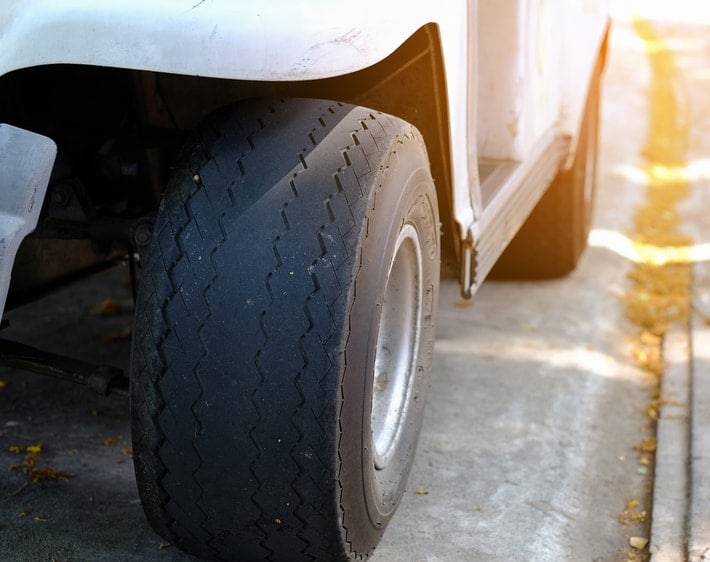
Credit: www.firestonecompleteautocare.com
Types of Tires
There are four main types of tires: all-season, winter, summer, and off-road. All-season tires are the most versatile type of tire and can be used in a variety of conditions, including dry roads, wet roads, and even light snow. Winter tires are designed for use in cold weather and provide better traction on icy or snowy roads.
Summer tires are made for warm weather driving and provide good grip on dry pavement. Off-road tires are designed for use on rough or unpaved surfaces and provide good traction in mud or sand.
Conclusion
Assuming you would like a summary of the blog post “How to Know What Tires to Get”, here it is:It can be tough to figure out what kind of tires you need for your car. After all, there are so many different types and brands out there.
But don’t worry – this guide will help you figure out exactly what tires you need.First, you’ll want to consider the climate where you live. If you live in an area with a lot of snow, you’ll obviously need tires that can handle that kind of weather.
On the other hand, if you live somewhere warm year-round, then you won’t need as much traction and can go for a lighter tire.Next, think about the type of driving you do most often. If you spend a lot of time on the highway, then fuel efficiency might be more important to you than off-road capability.
But if you frequently find yourself driving on unpaved roads or in bad weather, then getting a tire with good traction is key.Finally, take into account your budget. Tire prices can vary widely depending on all sorts of factors, so it’s important to find something that fits your needs without breaking the bank.
Keep these things in mind and finding the perfect set of tires for your car will be a breeze!
How Often are Tires Supposed to Be Rotated?
Tires should be rotated every 5,000 to 8,000 miles for optimal tire life and performance. However, consult your car’s owner’s manual or talk to your mechanic to get the best interval for your particular vehicle. Many factors can affect how often you need to rotate your tires, including driving habits and the type of vehicle you have.
Tire rotations are one of the most important maintenance tasks for keeping your car running safely and smoothly. But how often should you rotate your tires? Most mechanics recommend rotating tires every 5,000 to 8,000 miles.
This interval may be shorter or longer depending on your driving habits and the type of vehicle you drive. For example, if you do a lot of stop-and-go city driving in a heavy vehicle, you may need to rotate your tires more frequently than someone who drives mostly on highways in a lighter vehicle. If you’re not sure how often to rotate your tires, consult your car’s owner’s manual or ask a qualified mechanic.
Following the recommended tire rotation schedule will help ensure that your tires wear evenly and last as long as possible.
Why You Should Rotate Your Car Truck or SUV Tires
Is It Ok to Rotate Tires Every 10,000 Miles
Yes, it is perfectly fine to rotate your tires every 10,000 miles. In fact, it is actually recommended by most tire manufacturers. Rotating your tires helps to ensure even wear and tear, which extends the life of your tires and helps them perform better for longer.
There are a few different ways that you can rotate your tires. The most common method is to simply move the front tires to the back and the back tires to the front. You can also do a cross-rotation, which involves moving the front right tire to the back left position, the front left tire to the back right position, etc.
Whichever method you choose, just be sure to consult your owner’s manual or a professional mechanic to make sure you are doing it correctly. Rotating your tires every 10,000 miles is a simple and effective way to keep them in good condition and help them last longer. So don’t be afraid to give it a try!
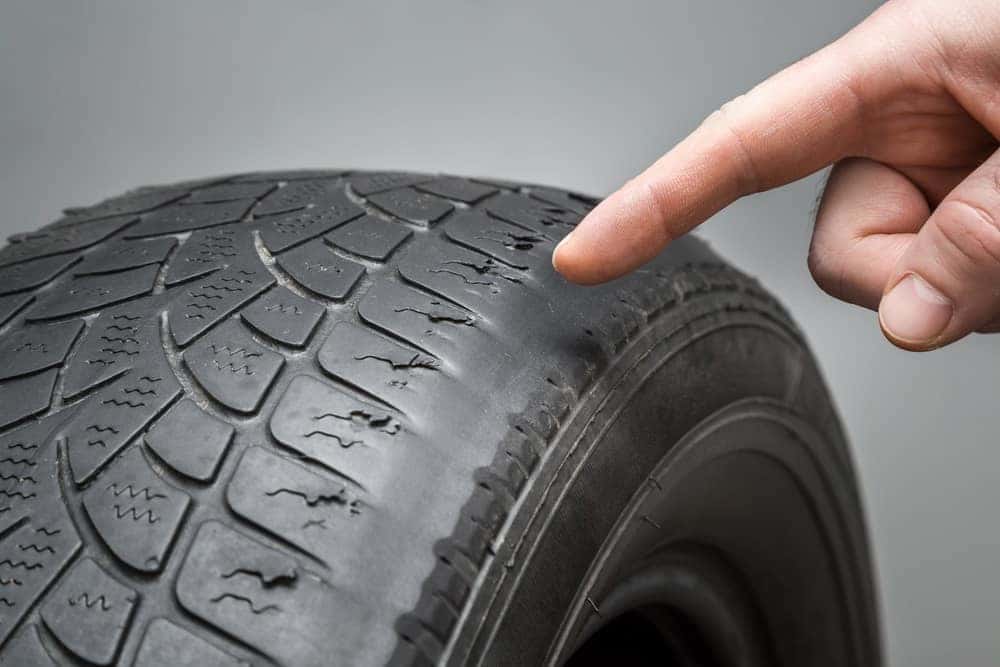
Credit: www.myminiannapolis.com
Do You Really Need to Rotate Your Tires?
Most people are aware that they need to rotate their tires, but many don’t know why. Tire rotation is important because it helps ensure even wear on all four tires. Over time, your tires will naturally start to wear down in different ways depending on their position on the vehicle.
The front tires typically experience more wear than the rear ones since they bear more of the weight of the car and also do most of the work when steering and braking. Rotating your tires every 5,000 miles or so helps prevent uneven wear and can help improve gas mileage and extend the life of your tires overall. If you’re not sure how to rotate your tires, it’s actually pretty simple.
For most cars, you want to switch the position of the front and rear wheels (swap the left front for the right rear, etc.). Some cars may have a different pattern though, so it’s always best to consult your owner’s manual first. Once you have the new positions figured out, just remove each tire one at a time and put them back on in the new configuration.
Make sure to check that each tire is properly inflated before getting back on the road. So there you have it – rotating your tires is important for maintaining even treadwear and can ultimately help improve gas mileage and prolong the life of your tires. Be sure to consult your owner’s manual for specific instructions on how to rotate your particular vehicle’s tires correctly.
How Often Do I Need to Rotate My Tires?
It is important to rotate your tires regularly in order to extend their life and ensure even wear. The ideal frequency for tire rotation depends on the type of vehicle you drive and the type of tires you have, but a good rule of thumb is to rotate your tires every 5,000 miles.
How Long is a Tire Rotation Good For?
A tire rotation is good for the life of the tires. The recommendation is to rotate your tires every 6,000 miles or 6 months, whichever comes first.
Is Tire Rotation Necessary Every 6 Months?
Yes, tire rotation is necessary every 6 months or every 5,000 to 8,000 miles, whichever comes first. Tire rotation helps to maximize the life of your tires by ensuring even wear and tear on all four of your tires. It also helps to improve the performance of your vehicle by restoring traction and increasing fuel efficiency.
Conclusion
Tires should be rotated every 5,000 miles to ensure even wear.
How to Pop Bulletproof Tires in Gta V
If you want to pop a tire in GTA V, there are a few ways to do it. You can either use a gun or a melee weapon. If you’re using a gun, shoot at the tire until it pops.
If you’re using a melee weapon, hit the tire until it pops.
- Get a car with bulletproof tires
- Drive the car to a secluded location
- Park the car and get out
- Find a large rock or similar object
- Place the object in front of one of the tires
- Step back and shoot the tire with a gun until it pops
What Level Do You Unlock Bulletproof Tires in Gta 5
In GTA 5, the player can unlock bulletproof tires by completing a certain number of missions. The number of missions required varies depending on the difficulty setting that the player is playing on. For example, on Normal difficulty, the player must complete 30 missions, while on Hard difficulty, the player must complete 60 missions.
How Do You Take off Bulletproof Tires in Gta 5?
In GTA 5, you can take off bulletproof tires by using a tire iron. You can find a tire iron in the game’s world by looking for it in garages, or you can purchase one from Los Santos Customs. Once you have a tire iron, approach a car with bulletproof tires and press the “Action” button to use the tire iron on the car.
Doing this will cause the car to lose its bulletproof tires and will make it more susceptible to damage from gunfire.
How Do I Get Bulletproof Tires in Gta?
In GTA, there are two ways to get bulletproof tires. The first is to find a special car that comes with them installed. These cars are rare, but they can be found by looking in the right places.
The second way to get bulletproof tires is to install them yourself. This can be done by taking a car to a garage and paying for the upgrade.
Do Bulletproof Tires Make Your Car Slower in Gta 5?
No, bulletproof tires do not make your car slower in GTA 5. In fact, they actually provide a slight speed boost to your vehicle. The downside to using them, however, is that they will eventually wear out and will need to be replaced.
How Do You Activate Bulletproof in Gta 5?
In order to activate bulletproof in GTA 5, you must first purchase a bulletproof vehicle from one of the many car dealerships located around the city. Once you have a bulletproof vehicle, you can then drive it to any of the Los Santos Customs locations and pay to have it upgraded with the bulletproof feature.
Conclusion
This blog post provides a step-by-step guide on how to pop bulletproof tires in GTA V. First, the player must find a car with bulletproof tires. Once they have found a suitable target, they must approach it from behind and shoot the tires out. After that, the player can simply drive away or use another method to destroy the vehicle.
How to Inflate Your Tires at a Gas Station
If you’re like most people, you probably don’t think about your tires very often. But if you’re driving on underinflated tires, you could be wasting gas and damaging your car. It’s important to check your tire pressure regularly and inflate them when necessary.
Here’s a step-by-step guide to inflating your tires at a gas station:First, find the right air pump for your tires. Most gas stations have air pumps that will work for passenger cars.
Look for an air hose that has a nozzle that fits snugly into the valve on your tire. If you can’t find an air pump, ask a gas station attendant for help.Next, insert some money into the machine or pay the attendant to turn on the air pump.
You’ll usually need quarters for this. Once the machine is turned on, hold the end of the air hose against the valve on your tire and wait for it to start filling up. Keep an eye on the gauge to make sure you don’t overinflate your tire – most passenger car tires should be inflated to around 32 psi (pounds per square inch).
Once your tire is inflated, replace the cap on the valve and move on to the next one. Repeat this process until all four of your tires are properly inflated.
- Park your car near the air pump at the gas station and turn off the engine
- Locate the valve stem on each tire
- The valve stem is the small metal cap on the tire that you unscrew to add air
- Unscrew the cap from each valve stem and place it somewhere safe so you don’t lose it
- Put the end of the air hose over each valve stem and hold it there while you turn on the air pump
- Check each tire’s pressure with a pressure gauge after inflating them to ensure that you have put enough air in them and then screw the caps back onto each valve stem when finished
How to Inflate Car Tires
Put Air in Tires at Gas Station near Me
Are you looking for a place to put air in your tires? If you’re near a gas station, chances are they have an air pump that you can use. Just look for the air pump, which is usually located near the gas pumps.
There may be a fee to use the air pump, so be sure to check before using it.If you’re not sure how to use the air pump, just ask someone at the gas station for help. They should be able to tell you how to use it and how much air to put in your tires.
It’s important not to overinflate your tires, so don’t put too much air in them. Once you’ve added enough air, screw on the cap and you’re ready to go!

Credit: mechanicbase.com
Can You Pump Up Car Tires at a Gas Station?
If you have a flat tire, or if your tires are low on air, you can fill them up at most gas stations. Most gas stations have an air compressor that you can use to pump up your tires.To use the air compressor, first find the right size nozzle for your tire valve.
Then, attach the nozzle to the valve and turn on the compressor. The needle on the gauge will move as air starts filling up your tire. Once the needle is in the green zone, you can remove the nozzle and put the cap back on your tire valve.
How Do I Fill My Tires Up With Air?
It’s important to keep your tires properly inflated for a number of reasons. First, it helps improve your gas mileage. Second, it extends the life of your tires.
And third, it makes for a smoother ride. But how do you actually go about filling up your tires with air?The first thing you need is an air compressor.
You can find these at most gas stations or auto stores. Once you have one, simply attach the hose to the valve on your tire and turn on the compressor. The air will start flowing into your tire and stop automatically when it reaches the proper pressure.
It’s always a good idea to check your owner’s manual to see what the recommended tire pressure is for your vehicle. This information can also be found on a sticker inside the driver’s door frame. Fill each tire up to that pressure and then check them again after driving a few miles to make sure they’re still properly inflated.
How Do You Put Air in a Tire at a Gas Station Without Gauges?
If your tire is low on air, you can fill it up at a gas station without using gauges. All you need is a coin and an air compressor.To start, locate the air compressor.
It will usually be near the gas pumps, and will have a big hose attached to it. If there is more than one air compressor, make sure to use the one that corresponds to your tire size – this information should be listed on a placard nearby.Next, insert your coin into the slot on the air compressor.
This will start the machine and allow you to fill up your tire. Hold the hose end against the valve stem on your tire (this is where you normally screw in or unscrew a gauge) and let the air flow into your tire until it reaches the desired pressure. You may want to check your car’s owner’s manual to see what the recommended pressure for your tires should be.
And that’s all there is to it! Filling up your tires at a gas station without gauges is quick and easy, so there’s no excuse for driving around with low tires.
Conclusion
If you need to inflate your tires at a gas station, the process is actually quite simple. All you need is a air compressor, which can be found at most gas stations. Once you have the air compressor, simply attach the hose to the tire that needs inflating and turn on the compressor.
The machine will do all of the work for you and stop automatically when the tire is full.

